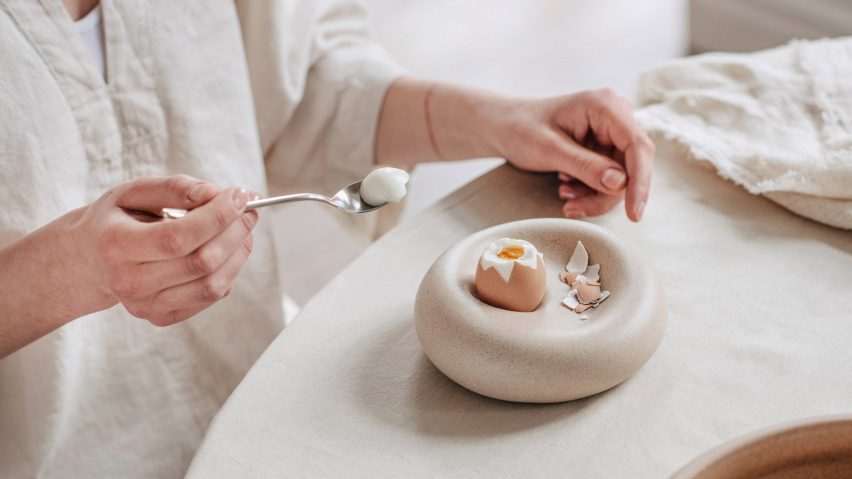
Fifteen design and fashion projects by students at Vilnius Academy of Arts
Hempcrete furnishings and a deliberately oversized fashion collection are among 15 projects in this school show by the Design Innovation Centre of Vilnius Academy of Arts.
The featured projects were completed by students enrolled on one of five courses at the Design Innovation Centre of Vilnius Academy of Arts. Each student was also the recipient of awards at this year's Young Designer Prize, an annual competition in Lithuania.
Vilnius Academy of Arts
School: Design Innovation Centre of Vilnius Academy of Arts
Courses: BA Product Design, BA Communication Design, BA Fashion Design and MA Design Research and Theory
Tutors: Renata Maldutienė, Jurgita Januškevičiūtė, Justė Tarvydienė, Dainius Bendikas, Alevtina Ščepatova, Marius Žalneravičius, Aušra Lisauskienė, Audrius Klimas, Julija Mazūrienė, Šarūnas Šlektavičius, Rokas Kilčiauskas, Juozas Brundza, Jolanta Talaikytė, Vaidutė Ščiglienė, Mantas Lesauskas, Aušra Trakšelytė
School statement:
"Design Innovation Centre of Vilnius Academy of Arts (VAA) is a centre of excellence established in 2007. The division provides commercialisation, development and renewal of new products, incubation activities and also promotes design in society.
"Since 2016, Design Innovation Centre is responsible for the intellectual property created in the academy. In 2018, divisions were opened in VAA faculties in Kaunas, Klaipėda and Telšiai. In 2019, The State Patent Bureau of the Republic of Lithuania granted VAA Design Innovation Centre the status of a PATLIB centre."
Young Designer Prize statement:
"Young Designer Prize is an annual competition organised in Lithuania since 2011 with 60-70 young designers competing for the awards every year. This year, 15 students were selected for the exhibition Young Designer Prize from four categories: product design, communication design, fashion design and design research and theory.
"The main aim of this competition is to encourage the professional development of design students, providing them with an opportunity to present ideas outside the academy."
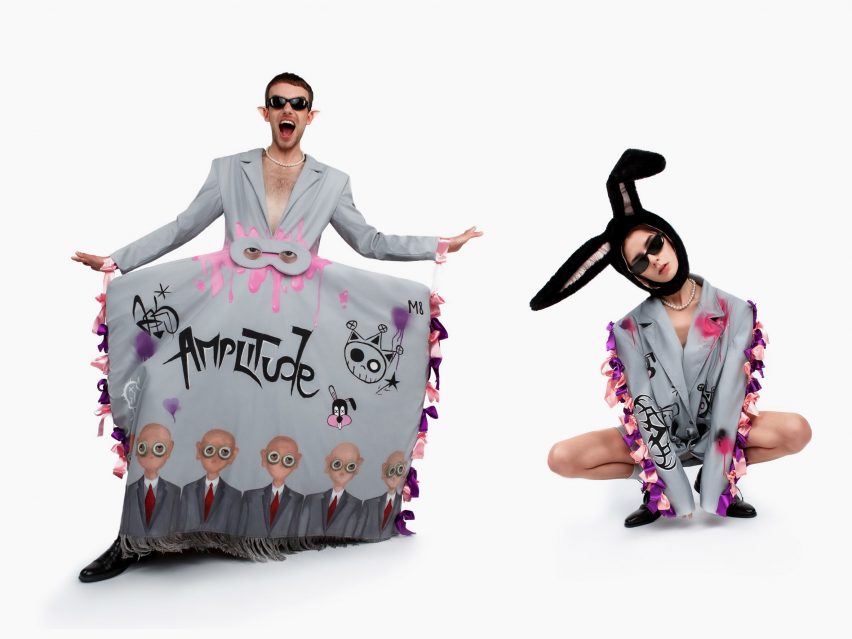
Where am I? by Adelė Burokaitė
"The moment when you wake up from a dream, but its images are still lingering in your mind, and for a moment you become one with reality was the starting point of my collection. Often the urge to go back to the dream rather than to wake up and start a new day inspired me to create a collection that would reflect the union of these two worlds, dream and reality.
"Where am I? features pillows, pyjamas, sleeping masks, silhouettes of Rococo fashion and modern men's clothing, collages and childhood photos as fabric prints and various interior details as part of the garments."
Student: Adelė Burokaitė
Course: BA Fashion Design
Tutors: Renata Maldutienė
Email: [email protected]
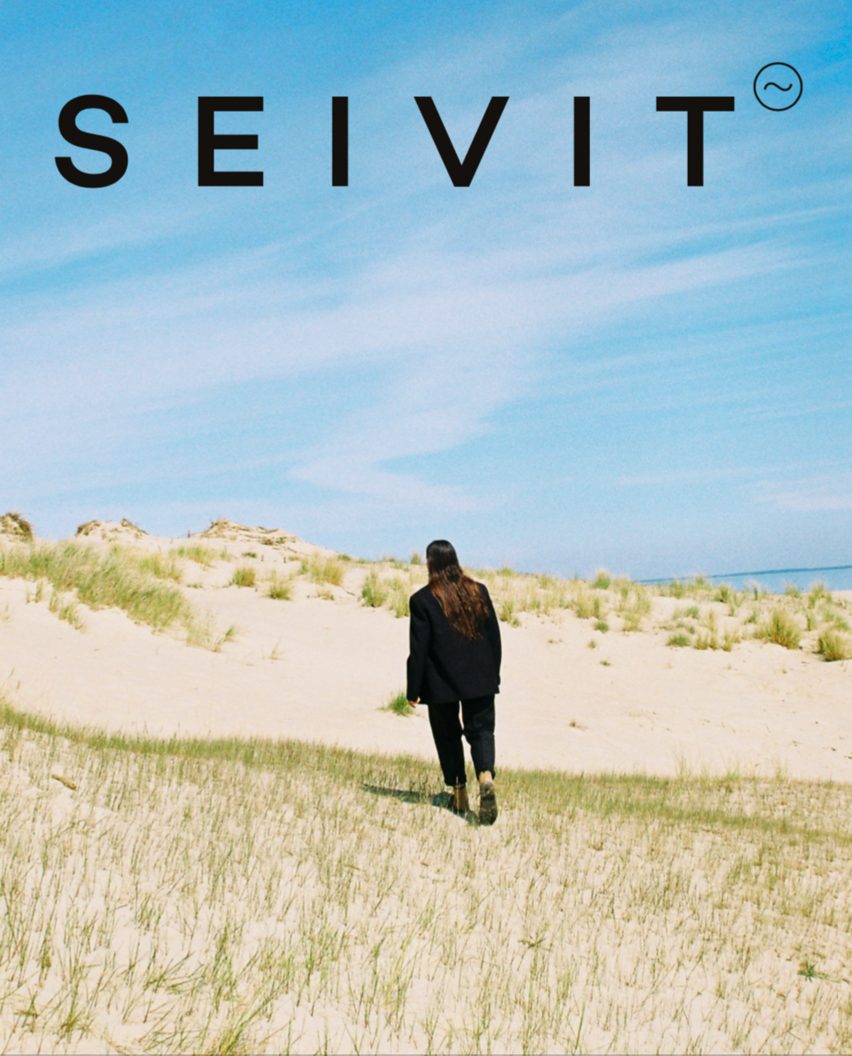
Seivit by Agnetė Voverė
"Seivit is a fashion design platform and a magazine representing Lithuanian fashion and accessory designers portfolios, creative design processes and publications about fashion. The study analyses the most important visual representation tool – fashion photography.
"Designers face a complex task: to narrow the creative concept of the collection into a photo campaign, and the path from the idea to the final product often remains unseen. Thus, the project aims to present fashion through a variety of visual materials, highlighting the creative design process. There is a niche for critical and analytical publications on the topic of fashion in Lithuania, therefore the platform focuses on the history of fashion and fashion design field."
Student: Agnetė Voverė
Course: MA Design Research and Theory
Tutors: Jolanta Talaikytė, Vaidutė Ščiglienė
Email: [email protected]
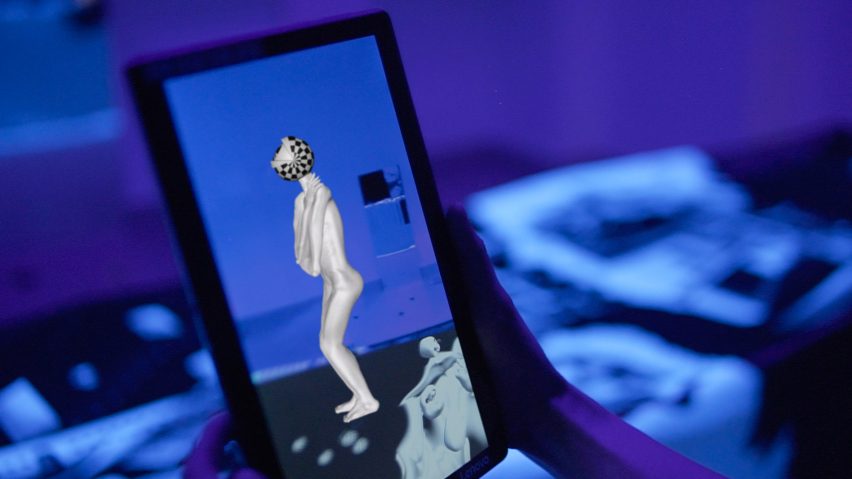
Stay in the mirror by Elena Kanarskaitė
"This project is a symbolic meaning of our inner world that can be reached through the state of dream. According to Yuri Lotman, 'dreams are a semiotic mirror of our inner life'. The mirror as a symbol belongs to one of the oldest archetypal groups and stands out for its mysticism.
"Dreams contain not only of marvellous images, but our post-traumatic, and negative memories, which can even frighten us. The project invites us to stay in this mystical and bizarre state of dream.
"Immersing yourself in simulation which contains the synergy of different media such as sound, image, light and augmented reality. Those media allow the observer to immerse themselves in that mysterious phase."
Student: Elena Kanarskaitė
Course: BA Communication Design
Tutors: Marius Žalneravičius
Email: [email protected]

The interaction of face and cultural environment – the designer's perspective by Elena Lašaitė
"The formation of the immediate environment along with the material environment has been partly driven by our fear or desire to feel safe. It is our physical, material environment around us that helps to actively and passively preserve our identity. Our bodies are the direct bearers of our identity.
"The identity addressed in the research interacts with the physical protection of one's data and the neurotic desire of an individual to preserve the identity, even though there is no real threat to it. Today our face has more authority than ever before.
"By protecting the face, we are protecting the identity. Objects of design substantiate the conclusion of the research work that we are a society of faces, yet my own face has become the principal axis of creation."
Student: Elena Lašaitė
Course: BA Communication Design
Tutors: Mantas Lesauskas
Email: [email protected]
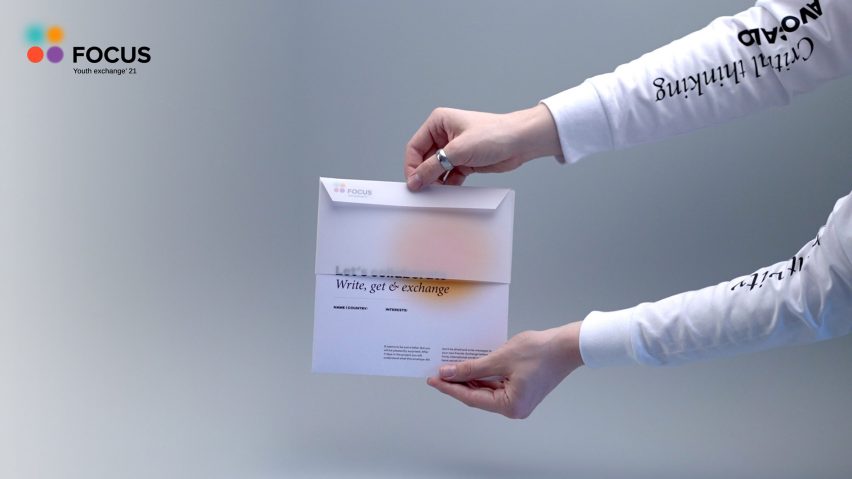
Focus by Emilija Dryžaitė
"Performative identity Focus is the first visual Erasmus+ youth exchange identity of its kind, allowing participants to experience activities by directly interacting with design objects. This bachelor's work becomes a guide for future Erasmus+ youth exchange projects, which shows the benefits of design for the content and quality of the project itself.
"The website design created during the Focus project becomes a reflection tool available for all projects, which facilitates the participants' expression of emotions and self-assessment of the activities overcome. This project boasts an international, funded youth event strategy, communication and visual identity."
Student: Emilija Dryžaitė
Course: BA Communication Design
Tutors: Aušra Lisauskienė
Email: [email protected]
The invisible side of plastic by Emilis Jonaitis
"Vast production and use of plastic products have saturated ecosystems with various kinds of plastic waste, which mainly consist of tiny, barely visible microplastics. For zooplankton, small plastic particles are indistinguishable from food and become a part of their diet, hence entering the food chain.
"Inevitably, the boundaries of the natural and the synthetic are starting to blur. The film illustrates current issues regarding plastic pollution and invites speculation about possible future outcomes. The project was created in collaboration with Plastic Justice."
Student: Emilis Jonaitis
Course: BA Communication Design
Tutors: Audrius Klimas
Email: [email protected]
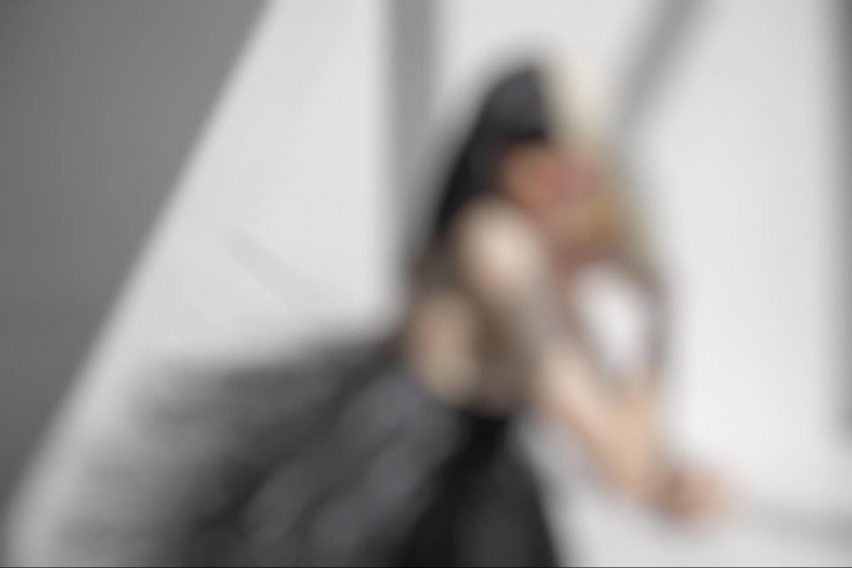
You by Gretė Labanauskaitė
"The topic of the bachelor's thesis was determined by the social exclusion of people with visual disabilities. Theoretical research was devoted to the analysis of the expression of social values in the fashion context. The aspects revealed the designer's ability to delve into the functional limitations of a narrow social group and defined the purpose of the work, to create a clothing collection that prioritises the tactile way of knowing fashion.
"The models were inspired by the Braille element, perceived by the main senses: touch, smell, and hearing. Explanatory texts were provided in formats accessible to the blind and partially-sighted. The social integrative fashion project is a meeting of two different worlds, the sighted and the blind, and a proof that fashion can help people with visual impairments integrate into society."
Student: Gretė Labanauskaitė
Course: BA Fashion Design
Tutors: Jurgita Januškevičiūtė
Email: [email protected]
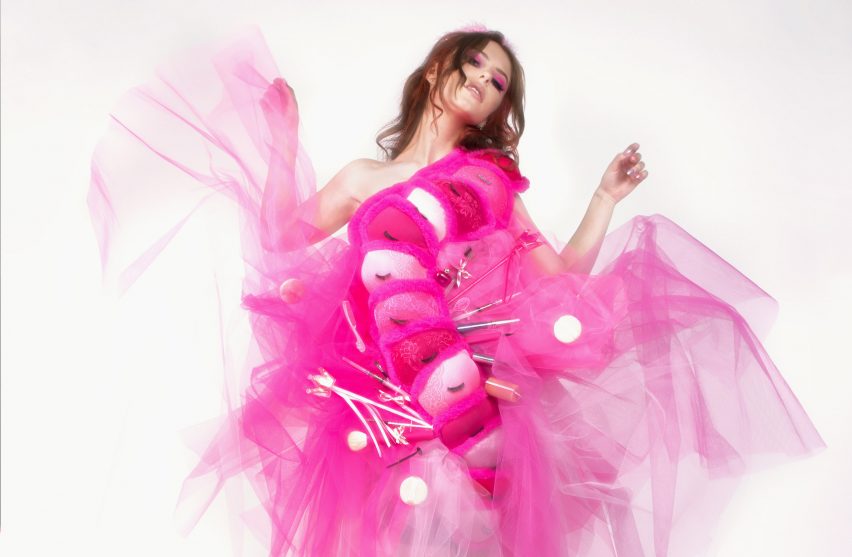
Camp phenomenon by Ieva Tamutytė
"This master's thesis researches camp phenomenon and its expression in contemporary fashion. Camp is presented as a cultural phenomenon that is socially involved and subject to the zeitgeist, therefore, a hypothesis is raised that excessive camp aesthetics can keep its relevance in contemporary fashion by manifesting ecological ideas. The peculiar relationship between camp phenomenon and cultural or material "trash" presented in this study allows the development of environmentally-friendly camp fashion facing the anthropocene.
"The project shows how camp's positive approach towards waste, combined with upcycling, can be adapted in fashion design. A collection of experimental fashion objects made of waste, depicting camp characteristics, is created. This camp fascination with "trash" can be useful not only in fashion but in changing how we perceive reusing and waste culture in general."
Student: Ieva Tamutytė
Course: MA Design Research and Theory
Tutors: Renata Maldutienė, Aušra Trakšelytė
Email: [email protected]
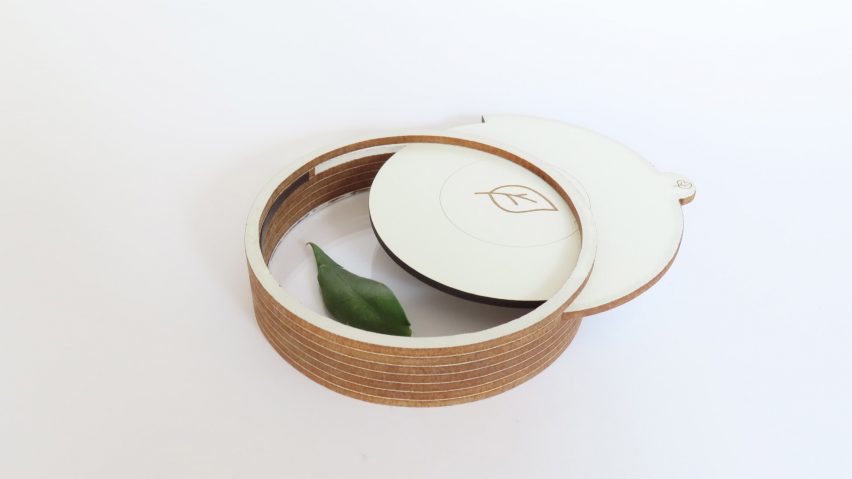
Pažink by Kamilė Pakalniškytė
"Pažink is a set of educational tools for preschool children. It is a research tool that was developed on the basis of experiential education because I believe that only through experience does a child gain knowledge of lasting value.
"This set of minimal and aesthetic designs gives you the opportunity to get to know your environment up close with not all sensory sensations. Given that there are few educational activities in kindergartens with outdoor activities, I have created this project that will encourage fun and rewarding outdoor activities."
Student: Kamilė Pakalniškytė
Course: BA Product Design
Tutors: Julija Mazūrienė
Email: [email protected]
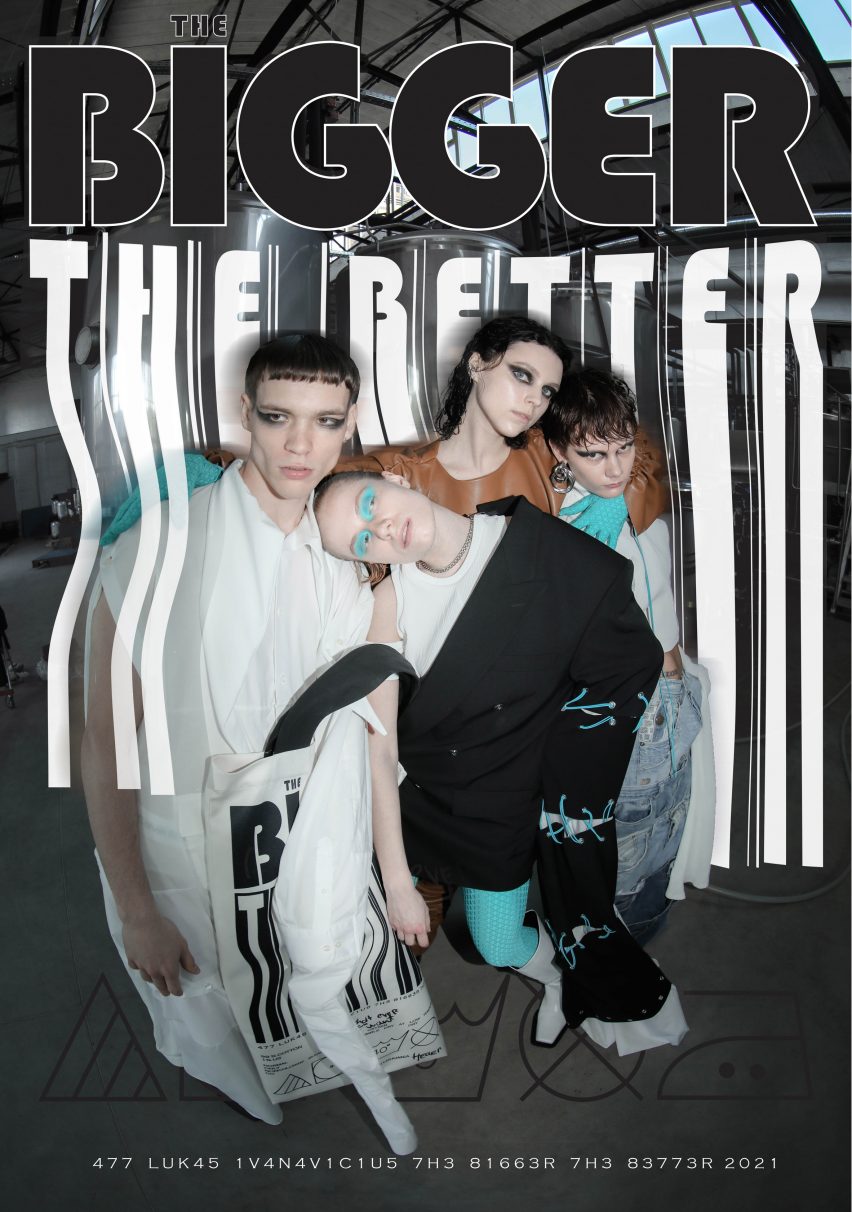
The Bigger The Better by Lukas Ivanavičius
"The topic of collection thesis was determined by the long-term establishment of unisex, oversize styles in fashion. The clothing trends that became popular in the 1990s erased the differences between women's and men's clothing, evolved into visual body transformations in the 21st century.
"The collection focused on the expressions of bodily deformation, the preconditions for which have become social and cultural changes since the 18th century. Rococo, power dressing, hip hop stylistic tendencies. The increase in clothing items of a certain period is creatively combined in the collection and forming a new stylistic image of the silhouette."
Student: Lukas Ivanavičius
Course: BA Fashion Design
Tutors: Justė Tarvydienė
Email: [email protected]
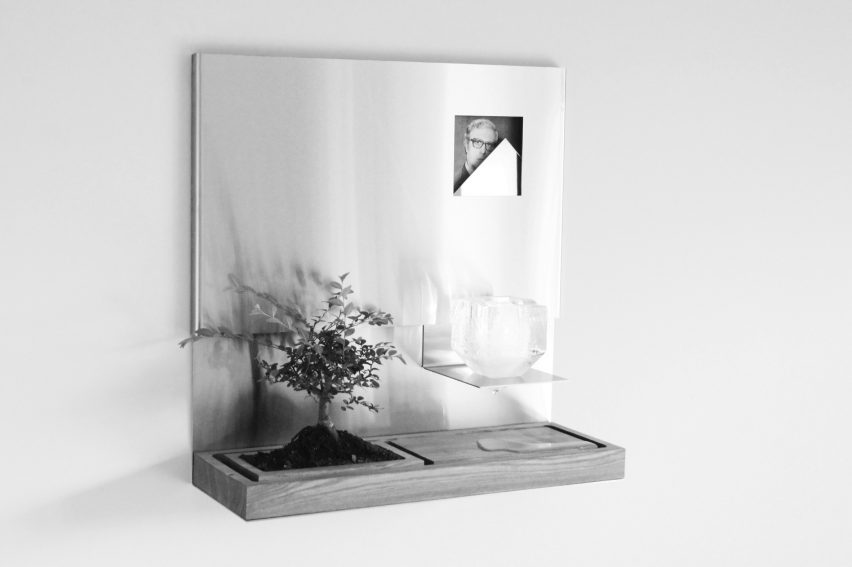
Life after life by Milda Pakarkltė
"Life after life is a project questioning the ways of remembering the deceased today. It is a set of two objects, created using essential death and afterlife symbols: water, fire, and tree. The first one is a reusable ice candle holder tray for remembering at the cemetery. The ice candle holder is a more sustainable choice because ice simply melts and disappears into the ground.
"A second object is a special place for remembering the dead at home. Because of the balance mechanism inside, the photograph of the deceased person appears only when the candle is lit. The photograph closes slowly as the ice melts, creating a limited period of time for remembering. The water drops down, creating a calming sound. The tree drinks the water."
Student: Milda Pakarkltė
Course: BA Product Design
Tutors: Šarūnas Šlektavičius
Email: [email protected]
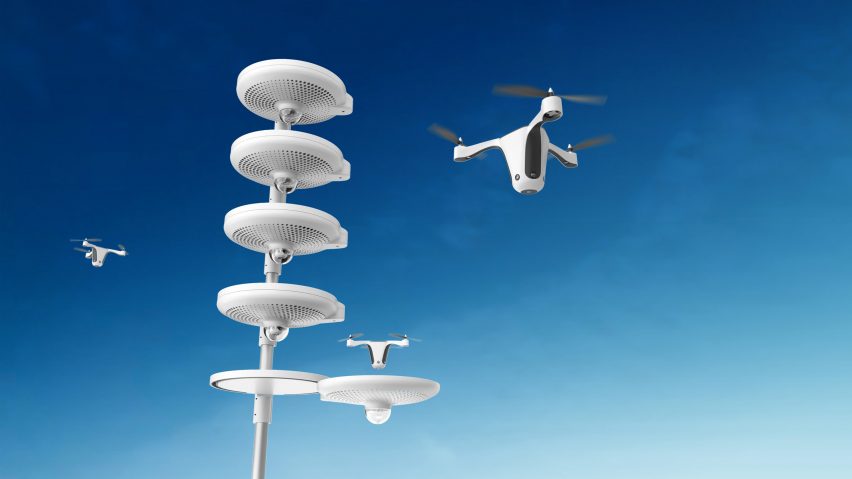
Teletouristic system by Paulius Buragas
"Teletouristic system's purpose is to create an opportunity to travel for those who can not due to physical disability, a lack of resources, commitments or to visit places which are difficult to reach. The system consists of a drone and storage capsule and works autonomously.
"Media from the drone is streamed directly to personal virtual reality environments and the flight is controlled through shared autonomy. The capsule will be mounted on a vertical surface, therefore, it is protected from minor vandalism, has a small footprint and is able to observe large distances from a stationary position. Several capsules can be stacked into vertical columns."
Student: Paulius Buragas
Course: BA Product Design
Tutors: Juozas Brundza
Email: [email protected]
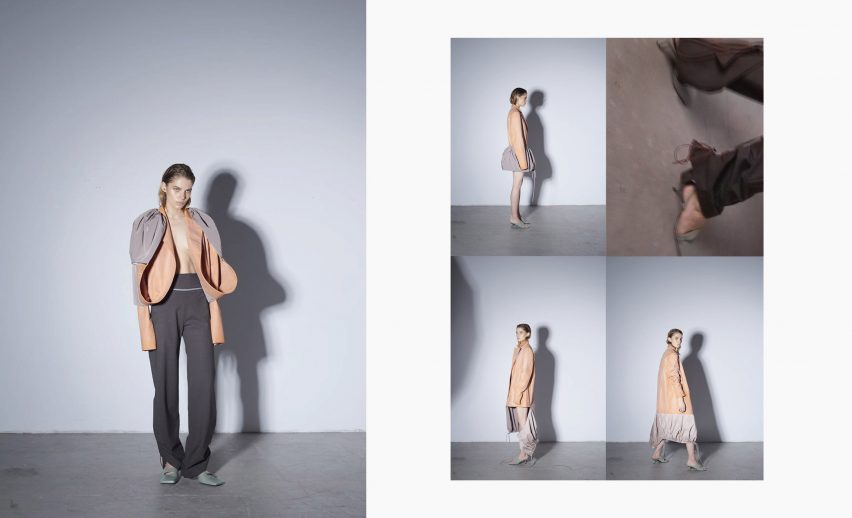
Memory of items by Urtė Vosyliūtė
"In the thesis Memory of items the aim is to find the roots of identity and to identify the style of personal work. The object of research is a set of personal items, the content of which is divided into groups in order to find the features that connect the objects and delve into the emotions generated by them. In an effort to cover a wider field of fashion design, the work is divided into three parts: a capsule clothing collection, an experimental fashion design object, and a commercial piece – a white t-shirt.
"The womenswear collection is based on a visual and associative analysis of personal items. The second part, an experimental design object, examines the importance of memory in observation and evaluation of the environment around us. The experimental object is presented in video format, which reveals the performative aspect of the action. The third part of the work is a commercial t-shirt that reveals a personal relationship between a person and their memories."
Student: Urtė Vosyliūtė
Course: BA Fashion Design
Tutors: Dainius Bendikas, Alevtina Ščepatova
Email: [email protected]
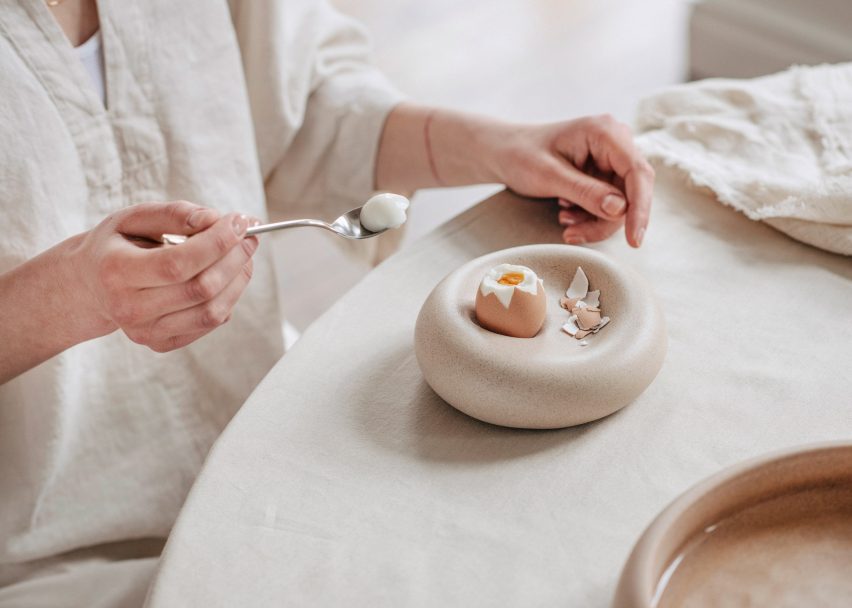
Eating experiences by Viktorija Stundytė
"Tableware serves as a connection between the food and the eater, which has an impact on sensory perception of food and eating behaviour. Expression reflected in the shape of tableware items both contributes to the sensory perception of food and creates space for learning – it coordinates eating behaviour in order to enhance mindful eating and focus on food choices and quantity.
"This experience during the eating process concerns not only the pleasures of eating, but also looking for broader implications of eating, which is a part of a sustainable food system vision that starts with the table and the choice of what, how, and why we are eating. The series of design objects aimed to create the sensory perception of food consists of seven different types of tableware accessories – serving dishes for water, berries, vegetables, eggs, seafood, meat and desserts."
Student: Viktorija Stundytė
Course: MA Design Research and Theory
Tutors: Mantas Lesauskas, Julija Mazūrienė
Email: [email protected]
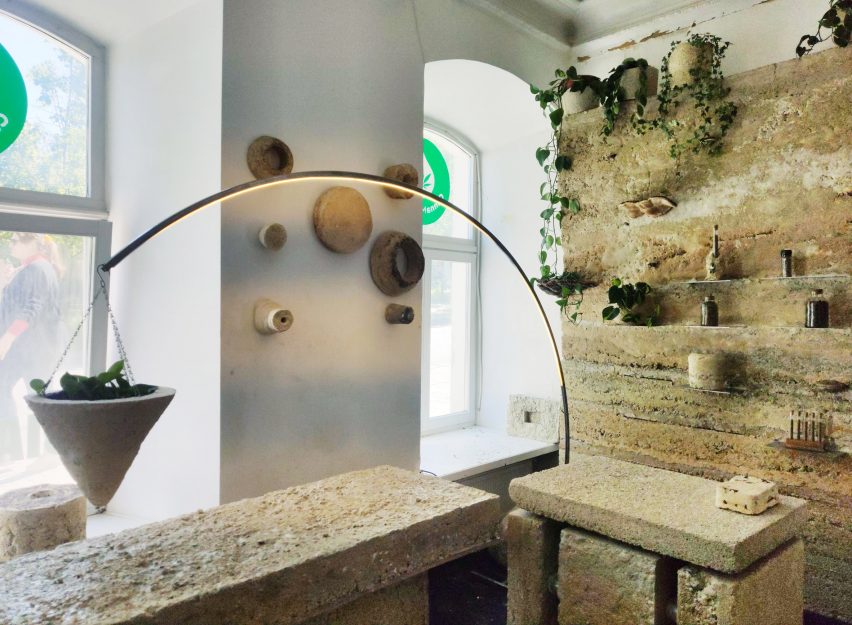
Hempcretelogic by Viltė Adomavičiūtė
"Hempcretelogic is an experimental project with hemp shives and other ecological materials. It includes a wall, table and lamp. All objects are sustainable, eco-friendly and unique."
Student: Viltė Adomavičiūtė
Course: BA Interior Design
Tutors: Rokas Kilčiauskas
Email: [email protected]
Partnership content
This school show is a partnership between Dezeen and Vilnius Academy of Arts. Find out more about Dezeen partnership content here.